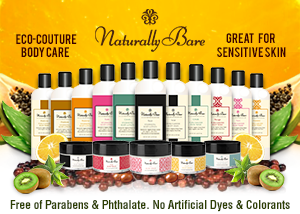Ingredient Intel: Sodium Lauryl Sulfate

This is the second installment of our ongoing series aimed to help you better understand the ingredients—both desirable and undesirable—in your home cleaning and personal care products. We arm you with information and provide a solid assessment of each ingredient so you can make educated decisions for yourself and your family.
Ingredient: Sodium lauryl sulfate (SLS)
What it is: SLS is a detergent and surfactant that behaves like soap.
How it Works: SLS delivers the suds in personal care cleaning products that we’ve all become accustomed to. It’s a surfactant, detergent, and emulsifier used in thousands of personal care and cosmetic products, floor cleaners, and in industrial cleaners. It is present in nearly all conventional shampoos, scalp treatments, hair color and bleaching agents, toothpastes, body washes and cleansers, make-up foundations, liquid hand soaps, laundry detergents, and bath salts.
What’s the Problem?
Like many other detergents, SLS is an irritant—and the skin and eye irritation they cause increases with the concentration of this ingredient in the product being used. SLS is the sodium salt of lauryl sulfate, and is classified by the EWG Cosmetics Database as a “denaturant, surfactant cleansing agent, emulsifier and foamer” that’s rated with a “moderate hazard.” Need any more convincing?
• The real problem with SLS is that the manufacturing process (ethoxylation) results in SLES/SLS being contaminated with 1,4 dioxane, a carcinogenic by-product.
• Personal care products products containing SLS have been found to contain traces of up to 279 ppm of 1,4-dioxane. The U.S. Environmental Protection Agency classifies 1,4-dioxane to be a probable human carcinogen.
• According to an Environmental Working Group (EWG) study, the common use of SLS means that 1,4-dioxane may be present in places we least expect it—as much as 57% of all baby soaps and 34% of all body lotions.
• In addition, the EWG study also showed that the potential for contamination with 1,4-dioxane is the highest for 11 of 62 product types assessed:
- 97% – hair relaxers
- 82% – hair dyes and bleaching
- 66% – hair removers
- 57% – baby soap
- 45% – sunless tanning products
- 43% – body firming lotion
- 36% – hormonal creams
- 36% – facial moisturizers
- 35% – anti-aging products
- 34% – body lotion
- 33% – around-eye creams
How Can You Avoid Sodium Laureth Sulfate? Check ingredient labels for sodium lauryl sulfate. It may also be listed by other names, including:
- sodium dodecyl sulfate
- lauryl sodium sulfate
- sodium n-dodecyl sulfate
- sodium laureth sulfate
- lauryl sulfate sodium salt
Have more questions about SLS? Please leave a comment—we’d love to help.



CONNECT WITH US